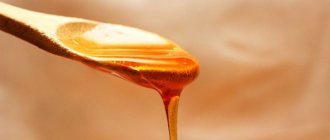The color of a healthy person’s stool normally varies from light brown to dark; a change in shade indicates that some pathological process has begun in the human body. The presence of bilirubin and bile pigments is responsible for the color of feces. Sometimes the color of stool changes due to the characteristics of the food consumed; usually this deviation returns to normal in a day or two. In most cases, orange-colored stool indicates problems with the gastrointestinal tract and digestive system.
Norm and pathology
In normal condition, feces are a small sausage, the size of which can vary from 10 to 20 centimeters. The stool should be uniform brown in color and soft in consistency. There should be no blood or pus in the stool, but mucus in small quantities is considered acceptable. The nature of the feces of different people may differ from normal standards, this is due to a person’s food preferences and depends on the amount of food and water consumed per day.
Deviations from the norm are considered to be the presence of impurities such as blood, pus, and foam in the stool. A sharp change in the color of stool and its consistency may indicate the development of a pathological process in the body.
The most common diseases that cause changes in stool color
Most often, a change in stool color occurs when:
- peptic ulcer of the stomach and duodenum, accompanied by constipation;
- hemorrhoids and anal fissures;
- tumors;
- hepatitis or severe poisoning with liver damage;
- liver cirrhosis.
In continuation of the topic, be sure to read:
- Details about the coprogram: preparation, conduct and interpretation of the analysis
- Causes of bloating and increased gas formation, treatment methods
- Stool analysis for scatology: preparation, submission and interpretation of the study
- Preparing and performing a stool occult blood test
- What medications should I use for increased gas formation?
- How to test stool for pathology at home?
- Irritable bowel syndrome: symptoms and treatments
- More about hemorrhoids: causes, symptoms and treatment methods
- Rectal fissure: causes, symptoms and treatment of pathology
- Enterococci: about bacteria, normal and pathological existence
Be sure to read:
Yeast found in a child’s stool: is it dangerous and is treatment necessary?
Possible causes of orange colored stool
The causes of orange stool in adults may be due to the following factors:
- Excessive consumption of foods that contain large amounts of carotene. These products include: broccoli, carrots, apricot, pumpkin.
- The use of certain medications can also stain stool, in particular, we are talking about a drug such as Rifampicin.
- Diseases of the genitourinary system - cystitis, as well as lung diseases can also cause orange-colored stool.
- Sometimes the reasons for feces turning orange are diseases such as celiac disease, Gilbert's syndrome, and escherichiosis.
- In addition, cirrhosis of the liver, hepatitis, problems with the pancreas and cholelithiasis are the cause of orange-colored stool in adults. In the presence of such pathologies, the patient may also have other signs, namely: pain in the abdominal cavity, the skin and mucous membranes become covered with a yellow tint. The patient has a high body temperature, nausea, vomiting, the stomach is swollen, and the appetite almost completely disappears.
Orange stool for infectious diseases
Orange stool is a symptom of escherichiosis
Most often, orange stool is a symptom of an infectious disease such as escherichiosis. It is caused by pathogenic microorganisms. Sources of infection can be both patients with escherichiosis and hidden carriers of the bacilli. Characteristic symptoms of infection:
- Watery orange stools, very frequent (up to 20 times a day)
- Vomiting or regurgitation
- Pain and rumbling in the intestines, bloated stomach
- Increased body temperature
- Increasing symptoms of dehydration
Read: Irrigoscopy - what is it, preparing the patient and performing the procedure
Pathogens enter the body through insufficiently heat-treated meat and dairy products and failure to comply with personal hygiene rules. The body becomes especially susceptible to changes in climate and diet. Traveler's Diarrhea can ruin any trip if not treated immediately. Depending on the type of E. coli, Escherichiosis takes different forms. With the enterotoxigenic form, characterized by the absence of fever and liquid orange stool without its inherent odor, recovery occurs spontaneously, with virtually no treatment.
In the enteroinvasive form with pain in the lower abdomen, a sharp increase in temperature, frequent mucous stools, muscle pain, a state of weakness can last 2-3 days. Consultation with an infectious disease specialist and treatment aimed at relieving symptoms of intoxication are required. The most dangerous form of escherichiosis is considered to be enterohemorrhagic, manifested by severe pain and spasms in the lower part of the large intestine, loose orange stools with blood clots. This form is characterized by the absence of fever and symptoms of intoxication, but its consequences can be severe kidney damage, a sharp decrease in platelets in the blood, fraught with heavy bleeding.
Orange stool in combination with signs of an intestinal infection may be a manifestation of escherichiosis, an intestinal infection that requires qualified treatment to avoid serious consequences.
Causes in children
Unlike adults, it is quite common to see orange colored stool in children, and in most cases this is not a deviation from the norm. Orange-colored feces in a baby may be the result of a regular banana eaten the day before. In this case, it does not matter whether the child ate this banana himself or received it from the mother along with breast milk. Older children often eat and drink food products to which dye is added, such as candy, juices and drinks.
Eating low-quality ingredients can cause your baby to have bright orange-colored stool with a liquid consistency, which indicates disorders of the child’s digestive system.
The presence of pus and blood in the stool indicates the development of dysentery or more serious pathologies. In this case, you should immediately consult a doctor.
Causes of orange stool in an adult
Sometimes you can see orange stool in an adult or child.
But don’t be scared right away and look for the cause on your own and start treatment. Having discovered feces of a strange orange hue, it is prudent to contact a gastroenterologist to find out the cause of this phenomenon and, after the examination, begin treatment, if necessary. But in any case, extra knowledge will not hurt, and if the color of the stool changes, you need to have an idea whether this is a health hazard, or whether it is normal and no action should be taken, everything will go away on its own.
Causes due to diet or medications
Orange-colored stool is not always a symptom of a disease; it often acquires this color as a result of long-term mono-diets or from lovers of foods containing beta-carotene.
This pigment is found in large quantities in carrots, pumpkin, cauliflower, sweet potatoes, sea buckthorn oil, lettuce, herbs and spinach.
Beta-carotene is absorbed only 20-40%, converted into vitamin A, the rest leaves the body.
A similar effect can be caused by exceeding the dose of vitamin A solution. Some multivitamins have a similar effect; if the dosage is not followed, the whites of the eyes, feet, and palms may turn yellow. Also, the cause of a change in the color of stool can be the use of the drug Rifampicin, which is prescribed for the treatment of rabies, tuberculosis, leprosy, and gonorrhea.
If the color of the stool has changed after eating a large amount of foods containing the natural bright yellow pigment beta-carotene, or vitamins, there is no reason to worry; after a few days the stool will take on its normal appearance.
Orange stool due to gastrointestinal disorders
As a result of staining with bile pigments, stool acquires its characteristic brown shades, which are considered normal. If the functions of the stomach, intestines and other organs involved in the process of digesting food are not impaired, the feces have their usual shades and consistency.
The reason for the change in the color of stool in an adult depends not only on the nature of the diet or the vitamins consumed, this is also facilitated by disorders in the digestive organs, most often the liver, which produces bile pigments. In case of liver disease and obstruction of the bile ducts, the stool changes color to lighter shades.
With a lack of bile, most of the coloring pigments received from food remain unchanged. They turn light-colored feces into unusual colors, including orange, if the day before you consumed foods rich in beta-carotene.
Similar changes in the color of stool lead to:
- cholelithiasis;
- hepatitis;
- cirrhosis of the liver;
- cholecystitis;
- benign and malignant neoplasms in the digestive organs.
The unusual color of stool is accompanied by symptoms such as pain in the right hypochondrium, problems with digesting food, bad breath when exhaling, and deterioration in general health. Such signs indicate diseases of the digestive system, and in this case, a doctor’s consultation, examination and treatment are required.
Orange feces as a symptom of infectious diseases
If the unusual orange color of the stool is accompanied by symptoms of general intoxication of the body, increasing signs of dehydration, fever, repeated loose stools, vomiting, abdominal pain of varying intensity - most likely, infection has occurred with dangerous pathogenic microorganisms of dysentery, escherichiosis or rotavirus infection. One sign of these intestinal infections may be orange-colored stool.
In this situation, you cannot hesitate; you need to urgently consult a doctor for help.
Orange stool in infants and pregnant women
A similar orange color to a baby’s stool may appear after eating complementary foods made from “orange” foods, or if the mother’s breast milk is poorly absorbed or if there is an unsuitable formula.
The baby’s digestive system is still improving and food coloring pigments are excreted almost unchanged, so the baby’s feces periodically acquire bright colors.
It can also be a consequence of diseases.
If the baby’s general condition does not suffer, he is calm, eats and sleeps normally, there is no need to worry, after 2-3 days the child’s orange stool will change color to normal. But with any, even the slightest suspicion of pathology, you should immediately consult a doctor.
In pregnant women, stool can sometimes turn orange due to mechanical compression of the hepatic ducts.
As a result, a deficiency of bile is created in the intestines, and during this period the woman tries more to consume foods rich in vitamins, including beta-carotene-rich vegetables and fruits.
If this is not repeated orange diarrhea against the background of a deterioration in general health, there is no cause for alarm.
Some researchers believe that the reason for the red color of stool may be changes in hormonal levels during pregnancy, but this has not been experimentally confirmed.
What the doctor can prescribe
When visiting a doctor to find out the reason for the appearance of strange-colored stool, the appointment begins with a conversation and collecting an anamnesis of the disease, then the doctor proceeds with an external examination and after that, if he deems it necessary, prescribes laboratory tests of blood and urine.
Source: https://morewomen.ru/info/oranzhevyj-stul-u-vzroslogo-prichiny/
Diagnostic measures
Diagnosis of orange-colored stool includes a number of the following measures:
- As with any other disease, to determine the cause of orange-colored stool, it is necessary to conduct a general analysis of stool and urine.
- Advanced stool analysis - coprogram.
- Genetic testing for diseases such as Gilbert's syndrome and celiac disease.
- An ultrasound examination will help to see the condition of the liver and pancreas, as well as establish an accurate diagnosis.
In general, it is not difficult to establish the reason why the stool is orange; the most important thing in this case is to promptly contact a specialist who can accurately diagnose and prescribe appropriate treatment.
Why does orange stool appear and how to detect the cause?
The color of the stool is determined by the presence of bilirubin and bile pigments in it, as well as by dietary habits.
Sometimes it may change when you eat certain foods, but the next day or the day after everything returns to normal.
Orange feces can characterize the lightening of feces, that is, a change in the usual brown color to a lighter side. This is usually due to disorders of the gastrointestinal tract.
Let's figure out why the color of stool becomes lighter and what diagnostic methods will allow us to detect the cause. This article was written to familiarize yourself with the possible reasons.
We do not teach you what to do in case of any complaints, but raise your awareness in terms of the fact that even the most harmless change in stool can be a manifestation of a disease of the internal organs and requires contacting a specialist.
Important: If you observe a change in stool color for 2 or more days, be sure to consult a doctor and get examined.
Palpation of the abdomen is the easiest way to detect that the patient has problems with the abdominal organs
Diseases of the liver and pancreas
Problems with the liver, gallbladder and pancreas affect the level of bilirubin and bile pigments, which will be manifested by a change in the color of the stool. Orange stool in an adult occurs in the following situations:
- Hepatitis and cirrhosis of the liver due to decreased bile production;
- Gallstone disease, problems with the bile ducts (tumors, echinococcosis), which impedes the outflow of bile;
- Pancreatic tumors will sooner or later lead to associated inflammation of the liver, which means it will reduce the production of bile pigments;
- Inflammatory diseases of the pancreas, in particular chronic pancreatitis, reduce the enzyme activity of the liver, which disrupts the digestion of food in the intestines.
Localization and structure of the pancreas
Along with a change in the color of stool, the following symptoms are observed:
- Increased body temperature as a nonspecific reaction to inflammation;
- Abdominal pain (girdling pain in the epigastrium is characteristic of inflammation of the pancreas, and a pain symptom in the right hypochondrium is characteristic of diseases of the liver and gall bladder);
- Yellowness of the skin and mucous membranes, darkening of urine due to increased bilirubin in the blood;
- Nausea, vomiting, bloating, loss of appetite are signs of intoxication and disruption of digestion processes.
Important: Diseases of the liver and pancreas begin to manifest themselves with several of the symptoms described above, and only after that a change in the color of the stool will appear. And the appearance of this symptom without accompanying symptoms most often occurs due to dietary habits or when taking certain medications.
Bilirubin gives stool its color. Depending on your diet and when taking certain medications, bilirubin changes its color, which means it colors the stool in different shades.
Yellow feces are typical for people who adhere to a strictly dairy diet. Light brown stool is noted by people who follow a strictly plant-based diet. And orange poop is often found in carrot lovers.
This vegetable contains a pigment that, when released into the intestines, turns feces orange.
Interesting: Yellow feces are observed in infants due to increased fermentation in the intestines. This color of stool is normal for them, and orange stool in a baby indicates indigestion, which is associated with an incorrectly selected formula or intolerance to breast milk.
Some medications change the color of stool because they affect liver function. Orange-colored feces may appear when taking antibiotics, cytostatics, oral contraceptives, anti-tuberculosis drugs, and anti-epileptic drugs.
Other reasons
Less commonly, lightening of the stool can be caused by the following reasons:
- Celiac disease is an intolerance to the protein found in wheat, rye and barley. The disease begins to manifest itself as soon as these products are introduced into the child’s diet. Intolerant foods cause inflammation in the intestinal wall, which leads to changes in the color of the stool.
- Gilbert's syndrome is a genetic disease associated with pathology of bilirubin metabolism. In this case, part of the indirect bilirubin is not converted into direct bilirubin, but accumulates in the blood. As a result, jaundice develops, and the color of stool becomes lighter due to reduced formation and, as a consequence, the entry of direct bilirubin into the intestinal lumen.
- Escherichiosis is an infectious lesion of the gastrointestinal tract, manifested primarily by foul-smelling, loose stools. Sometimes the pathology becomes chronic, and orange diarrhea periodically appears in an adult.
What tests can the doctor prescribe?
Diagnosis of any disease begins with general clinical examinations: blood and urine tests. To identify the cause of orange stool, the doctor evaluates the following changes:
- An increase in leukocytes and ESR indicates an inflammatory reaction of the body;
- An increase in liver transaminases indicates dysfunction of the liver and pancreas;
- An increased level of direct bilirubin in the blood indicates a violation of the evacuation of bile along the biliary tract;
- An increased content of indirect bilirubin may indicate some blood pathologies, as well as liver dysfunction;
- An increase in enzymes (amylase, lipase, trypsin) during a biochemical blood test is a sign of acute pancreatitis;
- Amylase in the urine appears with pancreatitis;
- A decrease in total blood protein also indicates inflammation of the pancreas.
Among other laboratory testing techniques, you may need:
- Stool examination, which allows the detection of escherichiosis by detecting cysts in feces.
- Genetic testing for Gilbert's disease and celiac disease.
Then follow instrumental diagnostic methods. Ultrasound examination of the abdominal organs helps to obtain all the necessary data on the condition of the liver and pancreas and make the correct diagnosis. The method has an affordable cost and is presented in almost every clinic.
Ultrasound of the abdominal cavity is performed painlessly and without discomfort for the patient
Often, identifying the cause of a change in stool color is not a problem. The main thing is to contact a specialist in time.
All materials on the website ozhivote.ru are presented for informational purposes only, contraindications are possible, consultation with a doctor is MANDATORY! Do not engage in self-diagnosis and self-medication!
Source: https://ozhivote.ru/oranzhevyiy-kal/
Features of nutrition and medications
The reason that stool appears orange may be due to eating foods that contain natural or artificial dyes. Also, the use of certain medications leads to the fact that in some cases people experience a change in the color of their stool.
Food
The most common cause of stool color change is eating large amounts of red or orange fruits or vegetables. May affect the color of stool:
Carrots and pumpkin pulp color feces especially strongly. Spices cause orange-colored stool to change color. Turmeric, paprika, and red pepper give stool a bright color.
Eating large amounts of foods containing synthetic dyes can also cause stool to change color. If a person eats too many orange vegetables or consumes them for a long time, orange feces in an adult may become liquid due to overeating.
Medicines
An overdose of vitamin A causes a person to have loose, orange-colored stools. Some multivitamins that contain carotene also contribute to a change in stool color if taken for a long period of time. Patients may notice yellowing of the skin on the palms and feet, and a change in the color of the whites of the eyes.
The stool turns orange if the patient takes the drug Rifampin to treat tuberculosis. Drugs such as Nifuroxazide and Furazolidone can also give an orange color to feces.
Disorders of the liver and pancreas
Pathologies of the pancreas, accompanied by impaired enzyme production, lead to orange diarrhea in a person.
Changes in the color of feces are caused by the following diseases:
- Pancreatitis . With pancreatitis, the pancreas does not produce enough enzymes. This leads to disruption of the digestive processes and the appearance of feces of an unnatural color, diluting the stool in an adult, staining the feces orange or yellow
- Cancer . With this pathology, the patient’s stool is unstable, and there is either constipation or diarrhea. Stool color: from red-orange to colorless.
Also, liver diseases accompanied by impaired outflow or processing of bile can cause changes in stool color. Liquid orange stool is one of the symptoms of the following pathologies:
- Acute and chronic hepatitis . A feeling of heaviness in the right side of the abdomen, stabbing pain and frequent diarrhea are symptoms of the disease.
- Blockage of the biliary tract . The cause of impaired bile secretion may be stones, sand in the ducts, or inflammatory processes.
- Toxic reactions to taking medications, poisoning . With these pathologies, the number of red blood cells decreases, as they disintegrate and there is an increase in leukocytes in the blood.
Due to the increased breakdown of red blood cells, the level of free bilirubin in the blood increases in a person. An increase in the level of direct bilirubin in the blood leads to the development of jaundice. In this case, bile pigments, the appearance of which is associated with a violation of the processing of bilirubin by the liver, can be observed in both urine and feces.
Important! If a child’s orange liquid stool does not depend on nutrition, the baby complains of severe abdominal pain or cries for no reason, parents should be wary. Since such signs may indicate a problem with the liver or pancreas, you should consult a doctor as soon as possible.
Decoding the analysis in adults
Stool analysis helps determine the presence or absence of problems in the gastrointestinal tract. And with a chemical analysis, the presence of salts and protein is determined, acidity, mucus and some other indicators necessary to determine an accurate diagnosis are established.
- Soluble protein. The presence of this substance in the feces indicates that a malfunction has begun in the digestive system, since normally there should be no protein in the feces.
- Starch. This substance, present in feces, indicates a deviation from the norm, since starch must be completely broken down during the digestion of food.
- Muscle fibers. In a completely healthy person, fibers are present in the feces in a modified form, but if they are in an unchanged form, then this indicates a malfunction of the pancreas.
- Leukocytes. In a normal state, a person should not have white blood cells. Their detection and increased number indicate that the patient is developing pathologies of the gastrointestinal tract.
- Connective tissue fibers. This component is the remains of food of animal origin found in feces during defecation. The presence of such fibers indicates that the patient has low acidity, gastritis or pancreatitis.
Other reasons
Less commonly, lightening of the stool can be caused by the following reasons:
- Celiac disease is an intolerance to the protein found in wheat, rye and barley. The disease begins to manifest itself as soon as these products are introduced into the child’s diet. Intolerant foods cause inflammation in the intestinal wall, which leads to changes in the color of the stool.
- Gilbert's syndrome is a genetic disease associated with pathology of bilirubin metabolism. In this case, part of the indirect bilirubin is not converted into direct bilirubin, but accumulates in the blood. As a result, jaundice develops, and the color of stool becomes lighter due to reduced formation and, as a consequence, the entry of direct bilirubin into the intestinal lumen.
- Escherichiosis is an infectious lesion of the gastrointestinal tract, manifested primarily by foul-smelling, loose stools. Sometimes the pathology becomes chronic, and orange diarrhea periodically appears in an adult.
Decoding the analysis in children
Decoding a coprogram in children is somewhat different from in adults. One of the important indicators is the volume of feces. Thus, an excessively large or small amount of feces indicates that the child is experiencing a disturbance in the functioning of the gastrointestinal tract.
The consistency of the feces is equally important. Pasty stools may indicate colitis, and liquid ones may indicate that intestinal secretion is greatly increased.
The change in the color shade of feces in infants depends on what diet the nursing mother is on. In some cases, stool may change color as evidence that the baby has begun to have intestinal problems, so young mothers during lactation should follow a strict diet prescribed by a doctor.
Causes
The cause of orange stool may be excessive consumption of carrots, apricots, oranges, mangoes and other vegetables and fruits, which contain a lot of beta-carotene. It is an antioxidant that, in large quantities, can change the color of stool. Dietary supplements containing multivitamins and certain types of medications (for example, Rifampin) also change it.
If there are few orange and red fruits and vegetables in the diet, nutritional supplements and medications are not taken, and orange stool appears, this is already an alarming symptom. Most often, it indicates the presence of an inflammatory process, disturbances in the gastrointestinal tract, or is a sign of some other disease. The most common causes of orange stool are:
- Hepatitis;
- Stomach ulcer;
- Hormonal disorders;
- Bladder diseases;
- Cystitis;
- Pathologies of the liver and biliary tract;
- Lung diseases;
- Gastritis;
- Gallstones;
- Diseases of the pancreas;
- Kidney diseases.
The color intensity of the stool is an indicator of the stage of the disease. The brighter it is, the more cause for concern.
Orange stool in a child may indicate that he has abnormalities in metabolic processes. Sometimes it is a signal that the baby’s body is poorly absorbing breast milk. Orange feces often appear in a child when feeding a baby with artificial formula.
If the color of the stool does not return to normal within two to three days after eliminating carotene-rich foods from the diet, after stopping taking any medications and changing formulas in children, this is a serious reason to consult a doctor. Because the orange color of stool in a child or adult in such a situation is usually a sign of intoxication.
It can cause a rise in body temperature, nausea, vomiting, and diarrhea. Without proper measures, these phenomena often lead to dehydration of the body. Dehydration is especially dangerous at an early age. In such cases, the children’s body is not able to quickly restore the water-salt balance. And with a large loss of fluid, the child may experience a convulsive syndrome, causing loss of consciousness.
When should you see a doctor?
If the orange-colored feces remain for a day or two, and, in addition to the change in the color of the feces, there are no more impurities, then this is not a cause for concern.
If this condition lasts more than two days, then in this case you should consult a doctor. The presence of blood or pus in the stool also requires immediate contact with a specialist.
Causes of red stool
What is red stool a sign of?
Often, changes in the color of stool to red or orange stool appear only because a person has eaten too much food of the corresponding color. And although some people become overly worried about this, the worry is usually unnecessary.
For example, black stool may appear after eating black pudding or black currants, while the green color is caused by plant chlorophyll.
Orange-colored stool occurs due to eating carrots, apricots and other foods rich in beta-carotene.
Sometimes this color results from the use of drugs based on the anti-tuberculosis antibiotic Rifampicin or special supplements with vitamin A.
Red feces often appear due to the consumption of beets or tomatoes.
Many people are familiar with this change in stool after a meal, the main dishes of which were herring under a fur coat or borscht. But you also need to eat a lot of such foods for the red streaks in the stool to become pronounced.
If during a therapeutic conversation it turns out that the patient’s state of health is consistently good and has not changed, and the diet has recently been rich in similar foods, doctors do not consider this a disorder, citing physiological processes.
However, red feces may also indicate intestinal pathology.
Treatment of the causes of orange stool
If the stool begins to turn orange, the necessary treatment is prescribed by a gastroenterologist in accordance with what caused the changes.
If, during diagnosis, a large number of red and white blood cells are found in the patient, the doctor prescribes anti-inflammatory drugs, as this is the cause of the development of the inflammatory process in the body.
An infectious disease detected during diagnosis requires immediate hospitalization of the patient. The patient is first given medications that normalize the water-salt balance and intestinal microflora, and only after that the doctor prescribes medications that eliminate the inflammatory process, as well as rid the body of pathogenic bacteria. In addition, the patient is recommended a course of restorative therapy.
If gallstones are found in a patient with orange-colored stool, it is recommended to remove them through surgery.
It is important to note that if the color of stool changes in children or adults, you should not wait for time, but should immediately consult a doctor. Except for those moments when there is an exact certainty that the coloring of the feces was caused by some food product from the diet, in this case there is no need to worry, since the situation will normalize by itself.
Orange stool with functional disorders of the gastrointestinal tract
The color of stool is determined by bile pigments. They are the ones who color the stool in the “classic” brown color inherent in intestinal discharge without pathologies. If bile does not enter the intestines in sufficient quantities, it means that bilirubin synthesis does not occur in the liver and its enzymatic function is impaired. The reasons for this may be hepatitis, cirrhosis of the liver. A lack of bile pigments in bile can be caused by a violation of its outflow due to blockage of the bile ducts with stones, cholecystitis, a tumor process in the gallbladder, or its inflection. Then, along with a change in the color of stool, symptoms such as pain in the hypochondrium, digestive disorders (bloating, flatulence), and an unpleasant taste in the mouth appear.
Read: A visit to a proctologist - how to properly prepare yourself for the examination?
A gastroenterologist can correctly evaluate all these symptoms. He will prescribe laboratory and diagnostic tests and qualified treatment. You should not neglect such a symptom as orange stool, especially if it occurs in young children. Along with the reasons for this stool color that are harmless to the body, it can be a manifestation of serious diseases.
How feces, its color, smell, consistency can “tell” about a person’s state of health, watch the video:
https://www.youtube.com/watch?v=3t7Fe5DVRho
Read along with this article:
- Light yellow stool: is it worth worrying about?
- Green feces in infants as a symptom of dysbiosis?
- What to do if the stool is light yellow
- Black stool: causes of pathology and when to panic
- A child has black stool: diagnosis and treatment of melena and pseudomelena
- Green color of stool in children and adults: reasons...
- Should you be concerned when you see light-colored stools in your child?
- Green poop in a baby: causes, methods...
- Greenish stool, main causes in children and adults










